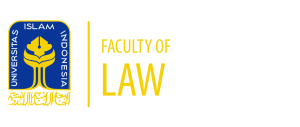OVERVIEW
Ahmad Saad Ahmad AL-Dafrawi was born in 1973. He graduated from high school and went on to study law at the University of Baghdad. In 1994-
1995, he received his bachelor’s degree in law. He was working as a lawyer. Then, he returned to school at the end of 2010 and graduated with honours from Middle East University in Jordan with a master’s degree in 2012. Five years later, specifically in mid-2017, he travelled to Malaysia to join the doctoral program at the Ahmed Ibrahim Kulliyyah of Laws (AIKOL)/International Islamic University Malaysia.
- Legal Expert in Murder and Suicide crimes caused by Steroids abuse in sports
competitions. - Legal expert of Medical law, especially genetic modification and manipulation
issues, and medical compensation issues. - Legal Researcher and Writer.
AL-Dafrawi is also working on these points:
- Preparing and submitting legal proposals that are custom-made and catered to unique and specific needs for countries in helping them establish and/or further develop their legal system against doping in sports.
- Draft effective penal codes to ensure the campaign against doping in sports at a very high level.
- Working with government agencies and putting their national curriculum into modules, seminars and programs that raise awareness among students at primary, secondary and tertiary educations levels, focusing on the campaign against doping in sports.
In November 2019, he received an official invitation and visa to participate in the fifth World Conference on Doping in Sport, held at the International
Conference Centre (MCK), 5–7 November 2019: Katowice, Republic of Poland.
PROFILE
Sorry, content is not available currently.
Publications
- An article published in the (Q2) Scopus-indexed Journal: Al-Dafrawi, Ahmad Saad Ahmad. “Critical Legal Reading of World Anti-Doping Agency’s Gene Doping Guidance,” Hasanuddin Law Review 9 no. 3 (2023): 269-286. DOI: 10.20956/halrev.v9i3.4653
- An Editorial indexed under (WoS- Scopus/Q4) journal: AL-Dafrawi, Ahmad.2023. “Absence of Reliable Screening Methods That Prove the Use of Gene
Doping in Sports”. MHSalud: Revista En Ciencias Del Movimiento Humano Y Salud 20 (1), 1-3. https://doi.org/10.15359/mhs.20-1.14 - A review indexed under (Q4) Scopus Journal: AL-Dafrawi, A. S. A. (2022). WADA Prohibited List: The Benefits of Combining Pharmacology, Medicine, and
Law. ASM Science Journal, 17: pp. 1-9. https://doi.org/10.32802/asmscj.2022.1291 - An Arabic article in Web of Science indexed journal: Ahmad Saad Ahmad AL- Dafrawi “The Dual Nature of Physical Steroids: Normative Concepts between Civil Jurisprudence and ShariꜤah”, Journal of College of Sharia and Islamic Studies, Volume 40, Issue 2, (2022). https://doi.org/10.29117/jcsis.2022.0335
- Article in (Q2) Scopus Journal: Al-Dafrawi, Ahmad Saad Ahmad. “An Islamic Viewpoint on Doping in Sports: An Analytical Study.” Journal of Islamic
Thought and Civilization 10, no. 2 (2020): 106-126. https://doi.org/10.32350/jitc.102.07 - Al-Dafrawi, Ahmad Saad Ahmad, Mohamad Asmadi Abdullah, Majdah Zawawi, and Zainudin Ismail. “PERFORMANCE-ENHANCING MEDICINES IN SPORTS: LEGAL DISCUSSION.” International Journal of Law, Government and Communication 4, no. 17 (2019): 48-60. DOI: 10.35631/ijlgc.417005
- Ahmad Saad Ahmad AL-Dafrawi, Mohamad Asmadi Bin Abdullah, Majdah Binti Zawawi, Zainudin Bin Ismail. “Taking steroids in the sports field: (Islamic
and Conventional Law perspective).” International Journal for Muslim World Studies (IJMWS) 17, no. 1 (2019): 318-355. - AL-Dafrawi, Ahmad Saad Ahmad, Mohamad Asmadi bin Abdullah, Majdah Zawawi, and Zainudin bin Ismail. “Consuming Prohibited Substances in Sport
Activities: A Legal and Shariah Perspective: تعاطي المنشـطات المحظـورة في الأنشـطة
الرياضـية: رؤيـة قانونيـة شـرعـية”. International Journal of Fiqh and Usul Al-Fiqh Studies 2, no. Spcl (2018): 23-37. https://journals.iium.edu.my/al-fiqh/index.php/al-fiqh/article/view/77 - Ahmad Saad Ahmad AL-Dafrawi. “Taking Physical Steroids in Sport Competitions (From an Ethical-Legal Perspective).” Journal of Political Science
and Law 2, no. 9 (2018): 188-206.










